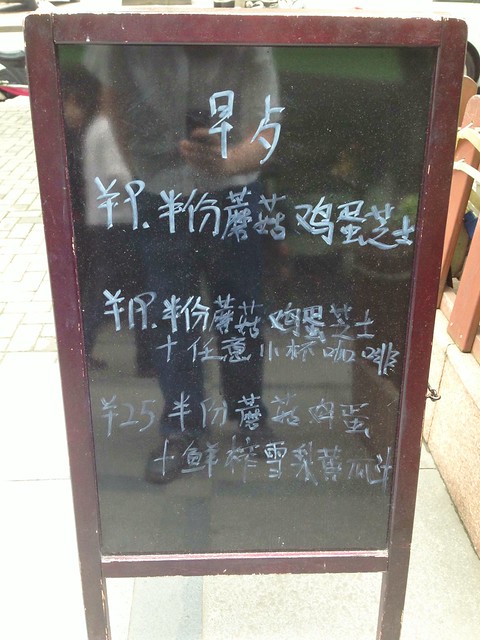Handwritten Chinese Numbers: Alternative Arabic Numerals
I mentioned before in my post “Chinese Numbers: Where 4 Meets 6” that I’d have a longer post on this topic. This is it (although not quite as long as I was hoping). Again, I don’t mean the Chinese character numbers (一、二、三、四、etc.); I’m talking about the numbers we call Arabic numerals. In China, they can occasionally be written pretty differently from what foreigners are used to, and present serious potential for confusion and misunderstandings.
4 and 6
This is the issue I mentioned before, and illustrated with this image:
I actually had a hard time finding really good examples of this “in the wild,” but here’s a fairly representative example:
Here are some more “normal” 4s:
9
This one is the easiest to document, and by far the least recognizable to Westerners, in my opinion. How do you even describe it? Kind of like a cross between a “P” and a “q”? Spot the 9s!
This last one is interesting:
You’ll notice the same hand that wrote the wacky 9 also wrote 早餐 as the non-standard 早歺 (that’s a second round simplification character).
5
Sometimes it looks like a backwards Z, and other times it looks like a weird curvy thing with a line through it. In an un-5-like way!
One more…
As a bonus, here’s an 8 that looks like a 6:
Sooo…?
Consider this post a little heads up. If you’re suddenly in a situation in China where you have to be reading numbers, running into these forms can be a little bewildering.
Also, I’ve been trying to collect representative examples for months, and this is all I’ve come up with. (And three of them came from ChinesePod co-host Dilu. Yes, the food-related ones were all me.) If anyone could share additional examples that I’m allowed to post, please email them to me, or link to them in the comments, and I’ll add them here as an update.
Other comments are, of course, also welcome!











I’ll have a look through some of my wife’s hand-written stuff… I know I get knots in my stomach while I watch her hand-write in English 🙂
So, what are the numbers on the second picture? Is it 46 #74.19% And then 47? And then Act 66? (Or is that Act 44? I still don’t trust my judgment on these.)
This can be quite a trap that a lot of people not familiar with Chinese handwriting can fall into. At the place where I work, we routinely receive documents written by Chinese people (and individuals from other parts of the world), and it’s always interesting to compare handwriting styles. The odd thing I heard the other day, though, was that my written numbers apparently look like some of those in the pictures above (I guess it’s a side effect from learning Chinese for so long haha).
drives me crazy mostly when I’m trying to add money to my balance at those little shops… they have a piece of paper where you write down your number and the amount you want to add. check and DOUBLE check! because they often mistake my 4 & 6’s due to this common problem! to all those people i’ve mistakenly given 50 or 100 free phone credit to, you’re welcome.
I’m American and I live in China. EVERY TIME I WRITE NUMBERS. PEOPLE ARE CONFUSED. IT ANNOYS ME.
Great post! My favorite is the way they write 9. It is also very interesting that 1 billion people have identical handwriting for numbers and the latin alphabet. I can recognize Chinese handwriting in a second 🙂
I remember in Nanjing that the cable repair guy left a password number that needed to be decoded by my wife and I. It was definitely a hard one to read!
I’m really glad you wrote about this! As a teacher in China I face this all the time, and the students don’t seem to believe that most of their 4s would be mistaken for 6s in the US (and I’m guessing throughout the Western world). Also, I’m tired of writing my phone number (which is full of 6s) on the board and having everyone whisper because they think I got the most unlucky phone number ever. That’s usually when I go into my “when I write 6 you might mistake it for 4” speech. Actually, being in China has changed the way I write 6 so that now the mistake is made less and less.
Yeah, I changed the way I write “6” too!
Yes, this number writing thing is yet another fascinating reality of China/Chinese… how are numbers even written differently?
My comment though perhaps is a little bit off topic… but related… as it is about one of the pictures above… namely the “Sherpa’s” sticker on the package…
What am I missing… a company that seems to do business in the mainland featuring “twitter” and “facebook” logos on their company sticker… why?
Sherpa’s is a service used largely by expats, and pretty much all expats have VPNs these days.
Thank you for posting this on fb today! This afternoon, I have to enter Chinese student cell phone and emails from a welcome BBQ at Penn.
I’ve just outlawed the use of 2’s that look like ≥ and 3’s that look kinda like that, with another down-left stroke. But the only question I have is for the 4. In school, we were taught both the open and closed-top 4’s were acceptable. But what is more internationally recognized?